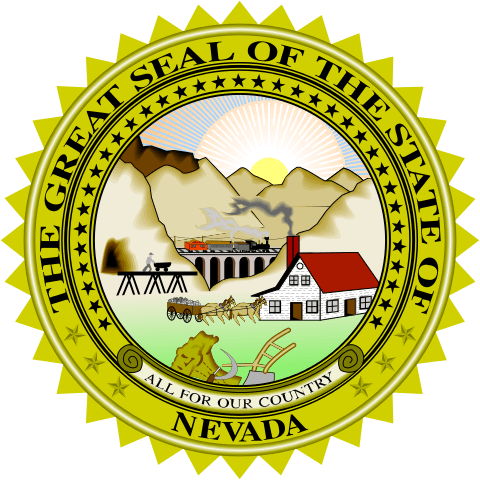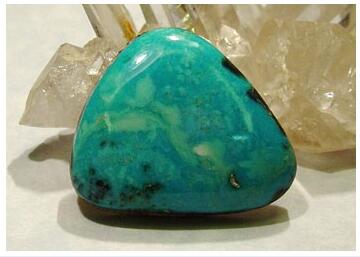Nevada is a US state in the western part of the United States of America, where it encompasses most of the Great Basin east of the Sierra Nevada and is enclosed by California, Oregon, Idaho, Utah and Arizona.
Nevada, named after the Spanish word nieve for snow (sierra nevada for snow-capped mountain range), became the 36th state to join the United States in 1864. In terms of area, it is the seventh largest of the US states. The capital is Carson City. The nickname of the state is “The Silver State” (The Silver State).
Parts of Nevada are restricted military areas, especially the Nellis Range in the south, which is home to the Nevada Test Site, which tested nuclear weapons during the Cold War.
| Area | 286,351 km² |
| Residents | 2,940,058 |
| Residents per km² | 10.3 |
| Capital | Carson City |
| Postal Code | NV |
| ISO-3166-2 code | US NV |
| FIPS code | 32 |
Geography
Nevada is bordered by Oregon and Idaho to the north, California to the west, Arizona to the southeast, and Utah to the east.
Nevada is geographically marked by desert and desert steppe in the arid south and west, as well as broad, north south aligned longitudinal valleys in the center and north. The north-west can be described as a quasi-alpine foothills to the Sierra Nevada. Sagebrush shrubs (Artemisia tridentata) cover large parts of the steppe floor, while pine and Virginian juniper trees are particularly common in the mountainous north and east.
Most of Nevada is in the sparsely populated Great Basin. Most of the border with Arizona is formed by the Colorado River. The Hoover Dam lies on the border with Arizona .
Along with South Africa and Australia, Nevada has the richest gold deposits in the world. There are also considerable silver reserves in Nevada, to which it owes its nickname “The Silver State” (the silver state).
Except for the city of West Wendover, which is in the Mountain Time Zone, the entire state is in the Pacific Time Zone .
Climate
Nevada has a dry desert climate. The winters are relatively mild depending on the altitude (around 10 ° C), but the nights are usually associated with frost (−8 ° C in Reno). In the summer, on the other hand, it is very hot with temperatures above 30 ° C. In addition, there is an extreme drought, which means that it sometimes gets 20 to 25 degrees colder at night. There is about 100-200 mm of precipitation per year, in winter partly as snow.
History
Mexico had to cede the area to the USA in the Treaty of Guadalupe Hidalgo. In 1850, the Utah Territory was established by Congress, which then comprised the present-day states of Utah, Colorado and Nevada. In 1859 the Comstock Lode, a rich silver and gold deposit, was discovered and Virginia City was established. With this discovery, more and more people flocked to the region: gold prospectors, prospectors, traders and others who were looking for their fortune.
On March 2, 1861, Nevada was separated from the Utah Territory and assumed its current name. On October 31, 1864, Nevada finally became the 36th state to join the United States.
In 1866, Nevada expanded to include the western part of the Utah Territory. On January 18, 1867, the part west of the Colorado River of the Pah-Ute County of the Arizona Territory was annexed, so the present area south of the 37th parallel, which today largely forms the Clark County.
During the Great Depression, Nevada allowed gambling on March 17, 1931 to fuel economic growth. In addition to gambling, in Nevada, as the only state in the USA, prostitution is traditionally legal in some districts of the state; but specifically not in Clark County and its capital Las Vegas.
The remoteness of Nevada was a prerequisite for the construction of large, secret army bases during World War II. Las Vegas Army Air Field and Tonopah AAF were built by the United States Army Air Forces in 1942.
The most important natives of Nevada include the Paiute in the west and south and the Western Shoshone in the north and east of the state. Despite an initial contractual respect for Indian territorial sovereignty, the parallel political construction of Nevada, its incorporation into the United States since the 1860s, and the massive discrimination against Indian rights until recently have led to tensions and conflicts between federal authorities and Native American Indians.
Economy
The real gross domestic product per capita (English per capita real GDP) was USD 50,161 in 2016 (national average of the 50 US states: USD 57,118; national ranking: 33). The unemployment rate was 5.0% in November 2017 (national average: 4.1%).
The most important economic factor in Nevada is tourism, due to the liberal gambling laws and good winter sports opportunities. The livestock industry and mining (copper, gold, mercury) are important.
Also known as Sagebrush State / Silver State / Battle Born State, Nevada is short for NV with a population of 1,998,257. The capital city of Nevada is Carson City and the biggest city is Las Vegas.

